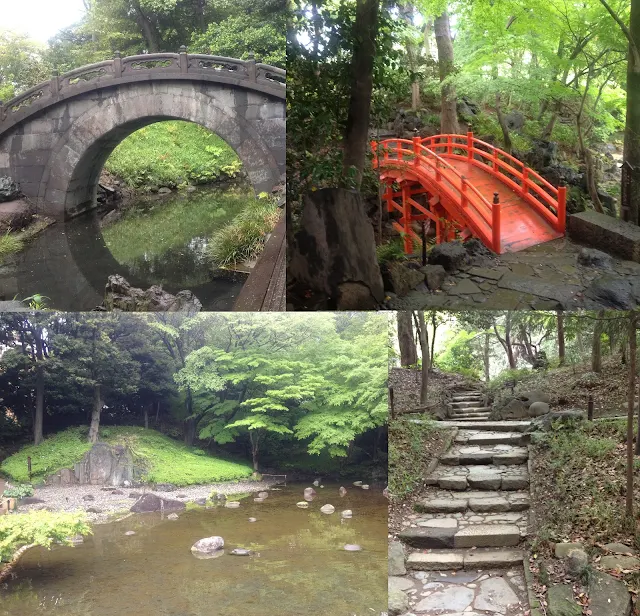
26 minutes by train, Koishikawa Korakuen Garden was the easily accessible garden from our place, not yet visited, found appealing and recommended by many visitors. When we reached, the climate was good. The day was not recommended for an outing since rain was on schedule in the afternoon.
Koishikawa Korakuen Garden is near the Iidabashi station along the Oedo line. This is the nearest train station. If we take the Iidabashi station of the Tozai line, we need to walk a bit and cross an overbridge to reach the garden. From Oedo line Iidabashi station, it takes around 3 minutes, and from Tozai line, it takes more than 8 minutes by walk. The JR Sobu line also has a stop at Iidabashi and takes around 8 minutes to reach the garden.
The garden is an ideal place for couples to hang out. We could see some aged couples exploring the artificially maintained natural beauty of the garden. The entrance fee is 300 JPY for adults. There is a discount for aged people above 65, and they need to pay only 150 JPY. Admission is free for junior high school students living or studying in Tokyo, and no ticket is required for primary school children and younger.
Koishikawa Korakuen Garden is open throughout the year except on December 29, 30, 31, and January 1. The garden is open from morning 9 to evening 5, and entry is allowed 30 minutes before the closing time.
The name of the garden, Korakuen, has its origin in China, and the meaning is considered as ‘Garden for enjoying power later on.’. Koishikawa Korakuen garden is one of the important historical assets in Tokyo. It has its story extending to the Edo period.
When we entered the garden, the sky was clear. We could cover many areas before the rain started. The rain didn’t last long. Though it was disturbing for a while for the visitors, the rain added more exotic beauty to the garden. Some of the landscapes looked tropical after the rain.
The full moon is a symbol of love in many poems. The full moon bridge in the garden, known as engetsu kyo in Japanese, was designed by a Confucian scholar of the Ming dynasty. The bridge has its original form preserved since creation and is therefore considered one of the important historical assets. The half-circle structure of the bridge and its reflection in the water make the image of a full moon. We could see rice paddy fields and two farmers in the garden. There were some grapevines and rabbit-ear irises. Another bridge with a vermilion color that crosses an artificial lake at one corner of the garden stands awesome! Known as Tsutenkyo, during the autumn season, this bridge adds beauty to the garden, contrasting with the red leaves.
We missed the weeping cherry, which is sixty years old. During Sakura blossom season, weeping cherry is one of the major attractions in the garden. Spread over more than 70,000 square meters with brooks, ponds, and many trees, Korakuen Garden would be more beautiful in November during the autumn season, we can guess.
Western-style and Japanese-style rooms are available in the garden. The garden is administered by the Tokyo Metropolitan Park Association.










Very great post. I simply stumbled upon your blog and wanted to say that I have really enjoyed browsing your weblog posts. After all I’ll be subscribing on your feed and I am hoping you write again very soon!
ReplyDelete